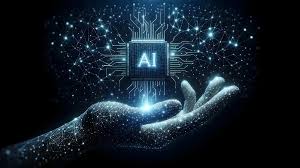
AI in the Workforce: A Double-Edged Sword — MIT Economist
Jul 9, 2025 |
👀 52 views |
💬 0 comments
As businesses and governments worldwide race to integrate artificial intelligence, a leading MIT economist is issuing a stark warning: the technology’s impact on the global workforce is a “double-edged sword” that could either lead to widespread prosperity or deepen inequality on a massive scale.
The commentary comes from Daron Acemoglu, a highly influential economist at the Massachusetts Institute of Technology, who has extensively researched the effects of automation on labor. According to Acemoglu's work, the current trajectory of AI development is dangerously focused on automation—replacing humans—rather than augmentation—empowering them.
“The way we are developing AI is not a law of nature; it’s a choice,” Acemoglu has repeatedly stated in his research and public discourse. “We are focusing too much on automation and not enough on new tasks and capabilities for humans.”
The Two Edges of the AI Sword
According to Acemoglu, the path forward presents two vastly different futures.
On one edge, AI offers the promise of a productivity boom and better jobs. In this vision, AI systems handle mundane, repetitive, and dangerous tasks, freeing up human workers to focus on complex problem-solving, creativity, and interpersonal skills. This "human-complementary" AI could lead to the creation of new roles and industries, boosting economic growth and improving the quality of work.
However, the other edge of the sword is automation that makes human skills redundant. Acemoglu warns that if the primary goal of AI implementation is to cut labor costs, it will inevitably lead to:
Job Displacement: A significant number of jobs, particularly in sectors like data entry, customer service, and transportation, could be eliminated.
Wage Stagnation: By creating a surplus of available labor for non-automated tasks, AI could drive down wages for a large portion of the workforce.
Deepening Inequality: The gains from AI-driven productivity would flow primarily to the owners of the technology and capital, while workers see their economic power diminish.
Increased Surveillance: The same systems can be used to monitor workers with unprecedented granularity, creating new pressures and eroding privacy.
A Matter of Choice, Not Fate
The crucial takeaway from Acemoglu's analysis is that the outcome is not predetermined. The negative consequences are a result of the specific direction AI development has taken—a path heavily influenced by corporate incentives to reduce headcount and a tech culture fascinated with achieving human-level machine intelligence.
He argues for a fundamental shift in direction, urging policymakers and corporate leaders to create incentives for developing AI that augments human capabilities. This includes reforming tax codes that currently favor machine investment over hiring, supporting research into human-centric AI, and strengthening the voice of labor in technological transitions.
As companies continue to pour billions into AI integration in 2025, the debate is shifting from if AI will change the workforce to how we will manage its dual nature. The choices made today, Acemoglu warns, will determine whether this powerful technology becomes a tool for shared prosperity or a wedge that drives society further apart.
🧠 Related Posts
💬 Leave a Comment
